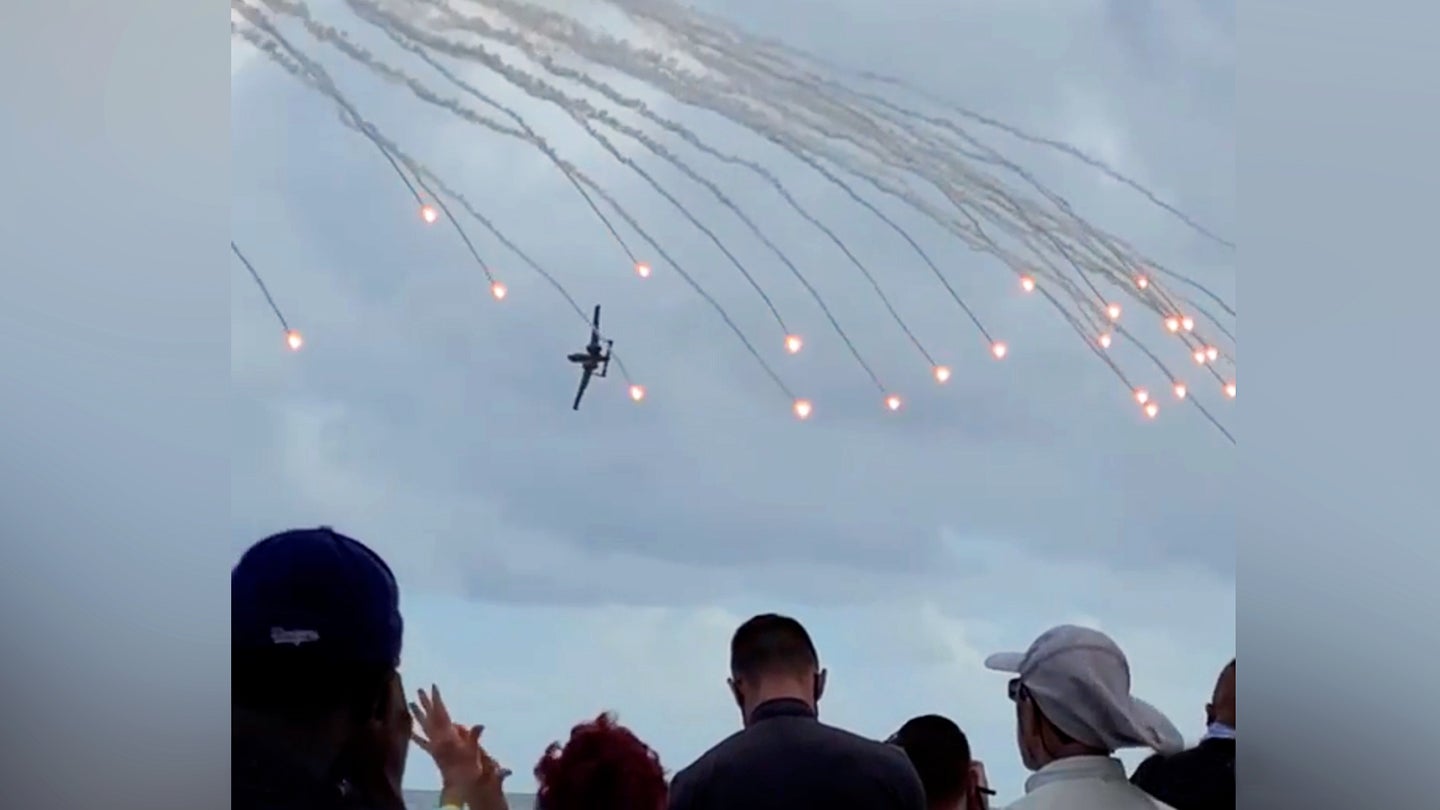With a highly peculiar and challenging air show season wrapping up, the Air Force’s tactical jet demonstration teams converged on Fort Lauderdale last week to mark the end of two of the four teams’ seasons. For the F-22 Raptor and A-10 Warthog demo teams, this Florida show would be their last.
We reported on the spectacular over-water photo flight featuring all four teams’ jets that occurred late last week, now we have video of the A-10 demo team marking its last show of the season, and the last demo of its show pilot, Cody “ShIV” Wilton, by doing something exceptionally rare for a U.S. air show—dumping a bucket of flares at low altitude across show-center.
Fort Lauderdale’s air show is a ‘remote show,’ taking place along the city’s sandy beachline with the aircraft flying over the water for their displays. This reality likely played into getting clearance to execute the dramatic and firey maneuver. In the past, flares have been used by U.S. military aircraft at a handful of air shows—almost always mega open houses at huge military installations. Even then, the flare releases usually occur over a sparsely populated end of the airfield and when the aircraft is in a high-climb. The A-10 demo team definitely broke the mold by doing it at low-level and show center on what I believe was the last pass of the demonstration.
Unfortunately, the Instagram post isn’t embedding at this time, but you can see the video here.
It seems that the day prior the team also used flares throughout its act, but without the huge flare dump at show-center to end the season (fast forward to 3:29 for the A-10 display if the player doesn’t do it automatically):

Check it out from inside the Warthog’s cockpit at this Instagram link here.
If you are wondering what those flares cost, we have the answer for you in this past special feature.
It was quite a way to say goodbye. Having spent some time with these teams in years past, the experience of traveling the country, and even beyond, as ambassadors for their perspective fast-jet communities, and for the Air Force overall, is an absolutely amazing experience. Getting something akin to the ‘movie star’ treatment wherever they go is also a nice perk, as well.
While the Thunderbirds and the Blue Angels definitely get the most attention, the solo tactical jet demo teams are, in a way, a bit more relatable and even approachable than their higher-profile counterparts. When it comes to recruitment, a young person may see becoming a Thunderbird as a pipe dream, but flying or maintaining a ‘gray’ Warthog or Viper, that’s more realistic. In addition, these teams not only cost a fraction of what the big demo squadrons cost to sustain, but they also touch areas where those big teams rarely, if ever, visit. They are also made up of front-line crews flying front-line jets. They can be tasked into combat operations very quickly if need be. And of course, the pilots would be getting the hours and the jets would be in the air even if the teams didn’t exist.
Overall, they are an incredible value to the Air Force.
Regardless, congrats to the ‘Hog demo team for completing their highly irregular season. Hell of a way to go out guys!
Contact the author: Tyler@thedrive.com
